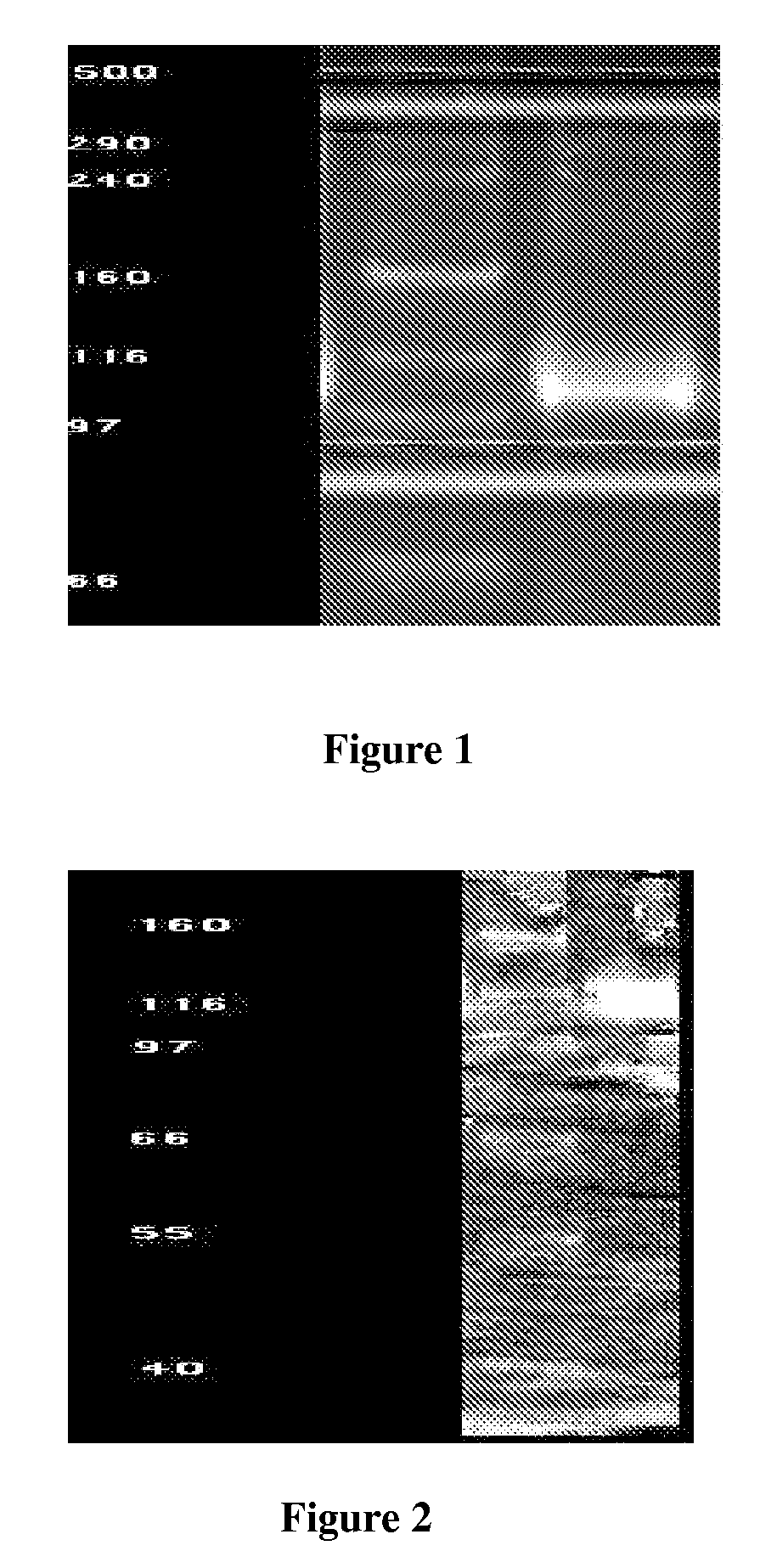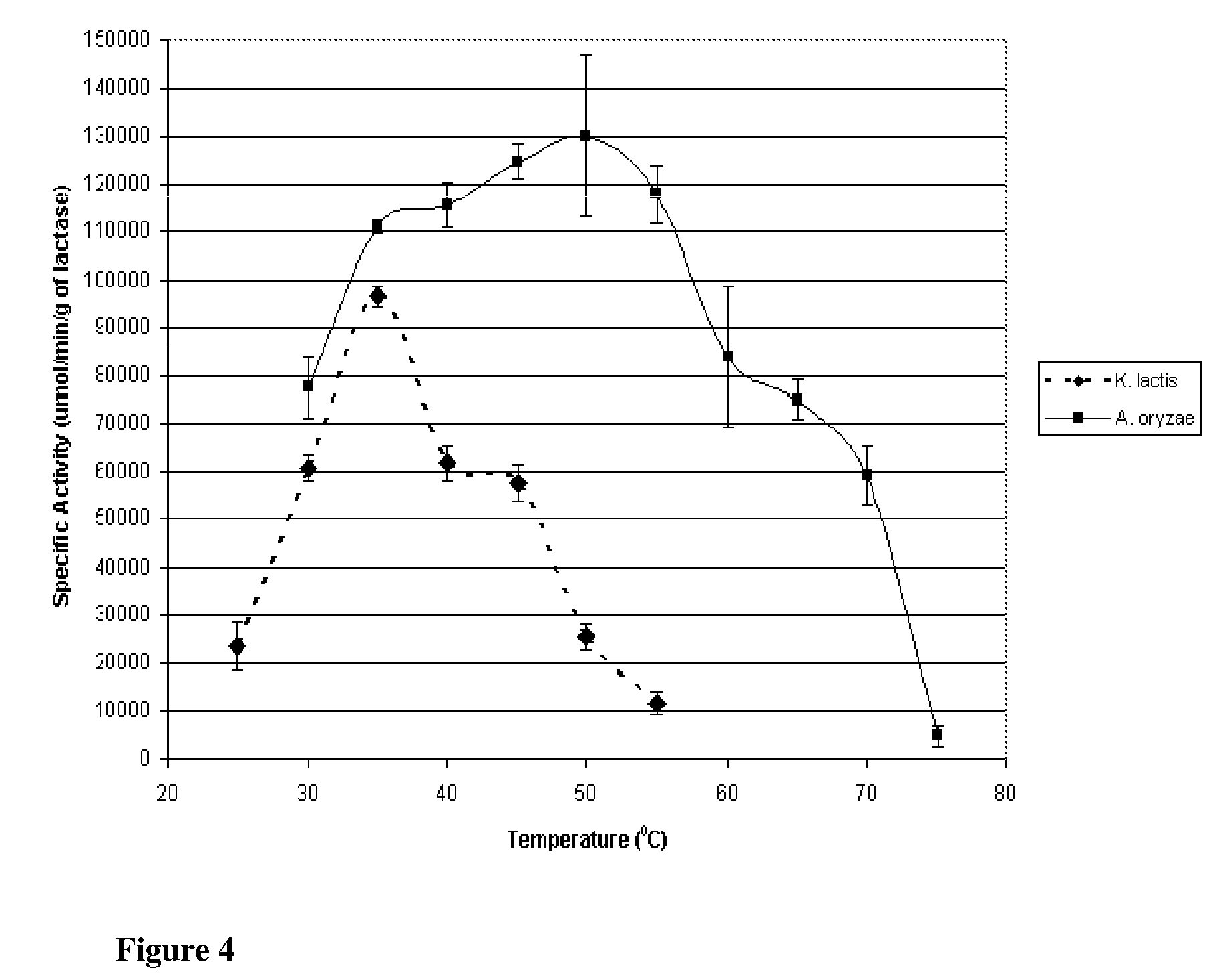Method and system for lactose-free or lactose-reduced milk and associated products, production thereof, and associated processes
a technology of lactose-free or lactose-reduced milk and associated products, which is applied in the field of dairy-based food products and their production, and can solve problems such as flatulence, diarrhea, cramping, and corresponding health problems
- Summary
- Abstract
- Description
- Claims
- Application Information
AI Technical Summary
Benefits of technology
Problems solved by technology
Method used
Image
Examples
example 1
[0136]Lactase is derived from a number of species, though commercial applicability is limited to enzyme from fungal, yeast, and bacterial species. In the food industry, the principal lactase sources are those of Aspergillus (sp. oryzae and niger) and Kluyveromyces (sp. lactis and fragilis). Though both serve to catalyze lactose into glucose and galactose, the optimum catalytic conditions as well as stability under conjugation and storage conditions differ. To determine the suitability of the preparations for immobilization, species from the two organisms, specifically Aspergillus oryzae and Kluyveromyces lactis, were evaluated for their respective activities and stabilities across multiple conditions in free enzyme form. This Example describes the purification of Lactase from commercial preparations.
[0137]A liquid preparation of commercial lactase from Kluyveromyces lactis (Valley Research, Inc.: Godo YNL-2), packaged in glycerol, was purified utilizing a two-step filtration method....
example 2
[0141]This Example describes the determination of lactase specific activity. Lactase specific activity was determined by a modification of Food Chemical Codex method for the determination of acid lactase units. An amount of the enzyme preparation consisting of 2-5 μg was added to 2 ml of a 0.012 mM solution of the synthetic lactose substrate, o-nitrophenyl-β-galactopyranoside, and allowed to react under shaking for 15 minutes. At the completion of the time period, 2.5 ml of 10% sodium carbonate was added to stop the reaction. The solution was diluted to 25 ml with deionized water and the absorbance of 2 ml of the diluted sample was read at 420 nm (Jenway 6300 spectrophotometer). Specific activity was determined using Equation 4 below:
Enzyme specific activity (U)=[(Asample−Ablank)*(25)] / [(ε)*(t)] Equation 4
Where Asample: absorbance of test sample at 420 nm, Ablank: absorbance of blank (no lactase) at 420 nm, 25: volume of final solution, ml, ε: extinction coefficient (4.54 ml / μmol) ...
example 3
[0148]This Example describes the evaluation of the stabilities of the two enzymes of the previous Examples to investigate potential applicability to lactose reduction in whey and fluid milk processing. K. lactis lactase stability has been shown to be influenced by magnesium and the presence of glycerol at temperatures above the optimum for catalytic activity (35° C.). Investigation was preformed into the stability of the enzyme with and without magnesium and glycerol at controlled room temperature (25° C.; pH 6.8) and refrigerated temperature (4° C.; pH 6.8).
[0149]K. lactis stability was determined by reconstituting purified K. lactis with one of the following four solutions: 1) 0.1M phosphate buffer; 2) 0.1M phosphate buffer containing 10 mM MgSO4; 3) 0.1M phosphate buffer containing 50% v / v glycerol; or 4) 0.1M phosphate buffer containing 50% v / v glycerol and 10 mM MgSO4. Each preparation was stored at 4° C. and 25° C., and the specific activity at 25° C., pH 7.0 (0.1M phosphate b...
PUM
| Property | Measurement | Unit |
|---|---|---|
| temperature | aaaaa | aaaaa |
| temperature | aaaaa | aaaaa |
| temperature | aaaaa | aaaaa |
Abstract
Description
Claims
Application Information
 Login to View More
Login to View More - R&D
- Intellectual Property
- Life Sciences
- Materials
- Tech Scout
- Unparalleled Data Quality
- Higher Quality Content
- 60% Fewer Hallucinations
Browse by: Latest US Patents, China's latest patents, Technical Efficacy Thesaurus, Application Domain, Technology Topic, Popular Technical Reports.
© 2025 PatSnap. All rights reserved.Legal|Privacy policy|Modern Slavery Act Transparency Statement|Sitemap|About US| Contact US: help@patsnap.com



